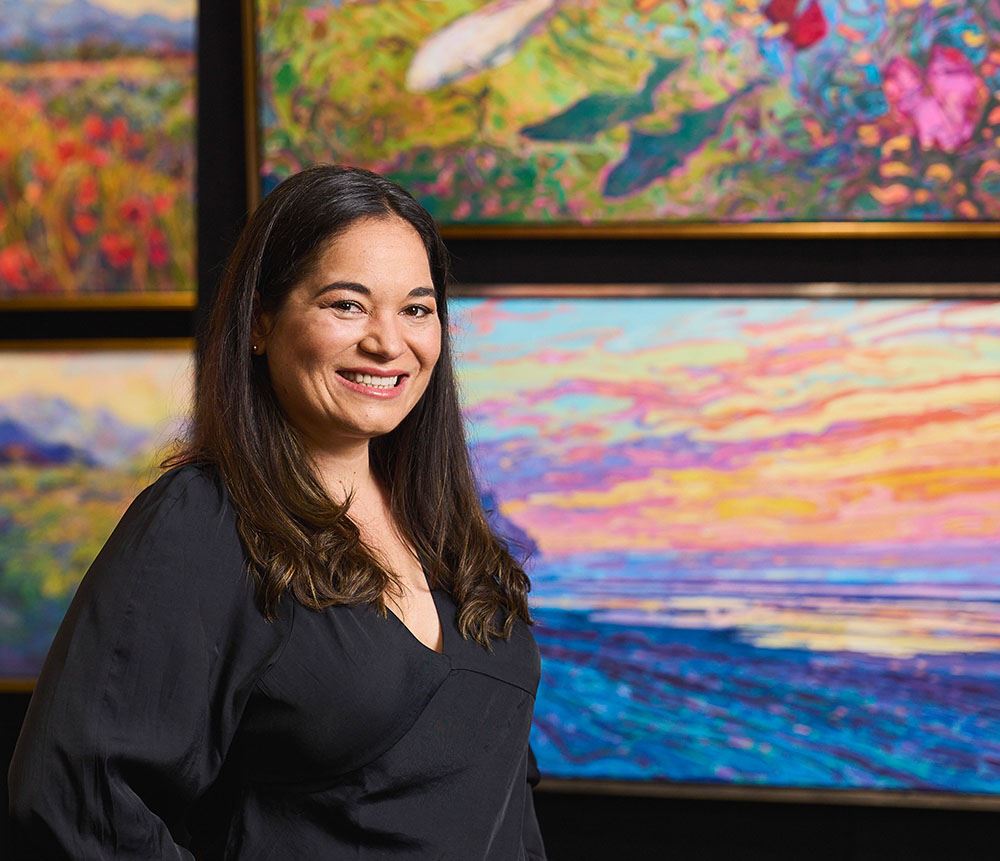Subtotal
$0
U.S. Shipping
FREE
Saved for Later
Shopping Cart
Subtotal
$0
U.S. Shipping
FREE
Saved for Later

It seems counter-intuitive, but to create more colors in your painting, you need fewer colors on your palette.
Here’s why: not all paint pigments blend together to make the colors you want. Have you ever tried to teach your child that red and blue make purple, only to find that when you blend their “toddler-level” red and blue paints together, you get a mushy brown? “No, no, I swear,” you say, and you attempt to demonstrate that yellow and blue make green, only to form a murky gray. What happened to the bright apple green you thought you would make?
When you fill your palette with tube after tube of eye-catching colors, like Ash Blue, Pink Coral, Bamboo Green, Indian Orange, and Provence Blue (yes, these are actual paint color names), your palette will look very pretty until you try to blend those colors together. You will immediately experience what every beginning artist complains about: muddy paint colors.
The way to avoid muddy colors and keep your colors fresh is to choose a limited palette of pure colors on the outside of the color wheel.
A good artist’s color wheel (like the Quiller Wheel) lists out the pure color hues, which are located on the outside edge of the circle, such as cadmium red, permanent green light, and ultramarine blue. Located inside the circle are all the colors that you can make if you blend these outer pigments together. I call these interior hues “intermediate colors,” and these comprise the bulk of what most artists paint with: raw sienna, sap green, burnt umber, yellow ochre, Prussian blue, and Payne’s gray, to name a few.
You have a choice as an artist: you can either blend these intermediate colors together yourself, or you can buy these colors off the shelf.
Using pure colors on the outside of the color wheel, I create my own sap green, yellow ochre, and Payne’s gray. I can mix Payne’s gray, for example, from permanent rose and phthalo green (pure pigments.) With my own, customizable Payne’s gray, I can adjust the color tone by adding a little more permanent rose or a little more phthalo green. I can warm it up by adding a little yellow, or cool it down by adding a little blue, without creating any mud.
With a limited palette, I not only have access to bright oranges, blues, and yellows, but I can create any intermediate color I want (as long as it falls within the shape created by my limited palette choice.) All my colors are harmonious, and they can be blended together in any combination to create a myriad of neutrals, shadow colors, and temperature variations.
This is how I create unlimited color with a limited palette. The possible blendings are endless, and I never run into a Wall of Mud preventing me from creating the colors I want.

Article by Erin Hanson
Discover the artist at the forefront of modern impressionism.

About Erin
ERIN HANSON has been painting in oils since she was 8 years old. As a teenager, she apprenticed at a mural studio where she worked on 40-foot-long paintings while selling art commissions on the side. After being told it was too hard to make a living as an artist, she got her degree in Bioengineering from UC Berkeley. Afterward, Erin became a rock climber at Red Rock Canyon, Nevada. Inspired by the colorful scenery she was climbing, she decided to return to her love of painting and create one new painting every week.
She has stuck to that decision, becoming one of the most prolific artists in history, with over 3,000 oil paintings sold to eager collectors. Erin Hanson’s style is known as "Open Impressionism" and is taught in art schools worldwide. With millions of followers, Hanson has become an iconic, driving force in the rebirth of impressionism, inspiring thousands of other artists to pick up the brush.